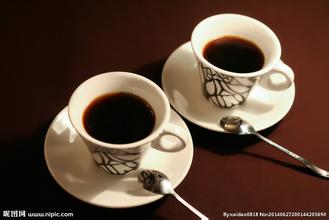Flavor description of Jamaican Blue Mountain Coffee Bean introduction to the varieties produced in the manor area
Flavor description of Jamaican Blue Mountain Coffee Bean introduction to the varieties produced in the manor area
As early as 1728, the British Governor in Jamaica, Sir Nicholas Strauss (Sir Nicolas Lawes), brought the first coffee seedlings to Jamaica from Martinique. By 1790, some coffee farmers among the refugees in exile from Haiti had settled in the Blue Mountains and brought coffee-growing technology here. In 1838, Jamaica abolished slavery, allowed freed slaves to cultivate their own land, and freed slaves moved to the mountains to grow coffee and exported it to Britain. These coffees became more and more popular in British society.
The Jamaican government gives a very strict definition of Blue Mountain Coffee: it must be grown in the coffee growing area of the Blue Mountain defined by the Jamaica Coffee Industry Council (The Coffee Industry Board) at an altitude of 3000-5000 feet above sea level, processed by government-certified roasting and processing enterprises and inspected by the Coffee Industry Committee in order to be a real "Blue Mountain Coffee". The Jamaican Coffee Industry Committee (CIB) was established by the Jamaican government in 1950. The main function of the Coffee Industry Committee is to regulate and guide the development of Jamaican coffee industry, ensure coffee quality, formulate blue mountain coffee industry standards, delineate blue mountain coffee planting areas, and test the quality of exported blue mountain coffee products. Each batch of blue mountain coffee exported by Jamaica must be inspected by the coffee industry committee and certified by the international caffeine organization before it is allowed to be exported. Only then can it be called Jamaican blue mountain coffee.
Alpine coffee plantations are located in Clarendon, St. Catherine and St. James. The company's business runs through the whole process of coffee production, from planting, primary processing, storage and sale of raw beans to coffee roasting and sales of cooked beans, and has developed new related products in recent years. Since the establishment of the Jamaica Coffee Industry Committee, it has established a long-term and close cooperative relationship with Valenford Coffee Co., Ltd. Most of the current national standards for coffee cultivation and processing in Jamaica come from Valenford Coffee Co., Ltd. It is precisely because of this, coupled with the special status of the only state-owned enterprise in the Jamaican coffee industry, that many people confuse Valenford Coffee Co., Ltd. with the Jamaica Coffee Industry Committee. So that both sides can only take the trouble to explain that Canada and the United Kingdom have been the major consumers of Jamaican coffee in history. Since 1985, Japan has become a major importer of Jamaican Blue Mountain coffee. Annual imports account for 85% of Jamaica's annual output. But in recent years, the demand for boutique coffee in the Chinese market has become increasingly strong. Some shrewd merchants began to sell Blue Mountain Coffee to China from countries and regions such as Europe, North America, Japan and Hong Kong, but the problem of product quality assurance also emerged and intensified. In this regard, the Jamaican Coffee Industry Committee has increased its attention to the Chinese market and actively recommended high-quality Jamaican coffee to the Chinese market.

Important Notice :
前街咖啡 FrontStreet Coffee has moved to new addredd:
FrontStreet Coffee Address: 315,Donghua East Road,GuangZhou
Tel:020 38364473
- Prev

Flavor description of Arabica coffee beans in Latin America introduction to the regional treatment of manor production
Flavor description of Arabica coffee beans in Latin America the planting of coffee trees is only the first step in coffee production. When the coffee fruits are ripe, they can be harvested through picking equipment. Two seeds (Arabica coffee beans) are then extracted from each berry. The last step is to roast coffee beans for consumption. This removes moisture and changes coffee.
- Next

St. Helena Coffee Flavor description Taste Variety characteristics Regional treatment method
St. Helena Coffee Flavor description Variety characteristics production area treatment method Napoleon did not fall in love with the local coffee because of poverty and boredom, although it was buried in a long history for more than a century, St. Helena's coffee has regained the world's attention at the end of the 20th century under the re-operation of DavidR.Henry. The soil there is formed by the eruption of volcanoes.
Related
- Detailed explanation of Jadeite planting Land in Panamanian Jadeite Manor introduction to the grading system of Jadeite competitive bidding, Red bid, Green bid and Rose Summer
- Story of Coffee planting in Brenka region of Costa Rica Stonehenge Manor anaerobic heavy honey treatment of flavor mouth
- What's on the barrel of Blue Mountain Coffee beans?
- Can American coffee also pull flowers? How to use hot American style to pull out a good-looking pattern?
- Can you make a cold extract with coffee beans? What is the right proportion for cold-extracted coffee formula?
- Indonesian PWN Gold Mandrine Coffee Origin Features Flavor How to Chong? Mandolin coffee is American.
- A brief introduction to the flavor characteristics of Brazilian yellow bourbon coffee beans
- What is the effect of different water quality on the flavor of cold-extracted coffee? What kind of water is best for brewing coffee?
- Why do you think of Rose Summer whenever you mention Panamanian coffee?
- Introduction to the characteristics of authentic blue mountain coffee bean producing areas? What is the CIB Coffee Authority in Jamaica?

